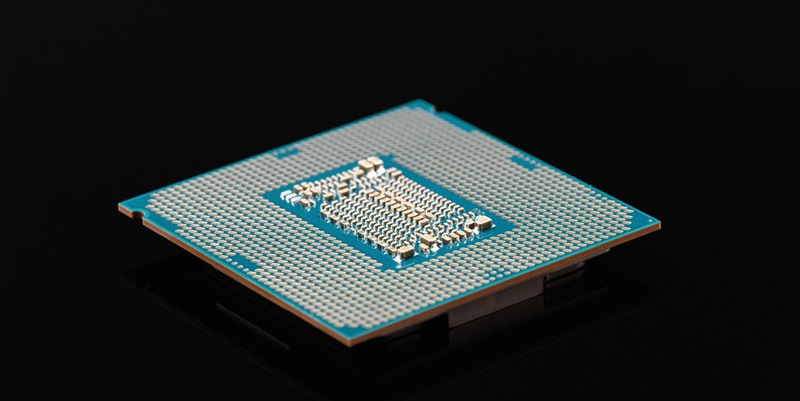The semiconductor sector is on the cusp of a significant advancement as Intel prepares to unveil its Arrow Lake series of processors. These new CPUs are set to redefine performance standards, fueling anticipation among tech enthusiasts for a development that could solidify Intel’s dominance in the market. However, leaks and rumors have stirred a complex reaction, blending optimism with a sense of caution.
Despite this dichotomy of expectations, the potential of Arrow Lake cannot be understated. With a promise to elevate processing power to new heights, these chips might just hold the key to the next era of computing innovation. As speculation abounds, the tech world watches closely, eager to see if Intel will deliver on these lofty projections and maintain its competitive edge.
The debate continues as the precise capabilities of Arrow Lake remain under wraps. Still, the stakes are high for Intel, which has faced intense rivalry from other industry giants. As such, the success of Arrow Lake is not just about technological progression—it’s also about market dynamics and Intel’s strategic positioning for the future. Whether or not skepticism is warranted, the industry’s next big step hangs in the balance, with Arrow Lake at its center.
Arrow Lake Launch and Performance Insights
Anticipated Timeline and Potential Delays
The Intel Arrow Lake processors are in the spotlight as leaks suggest a qualification phase in October 2024. Observers predict this could align the processors for an end-of-year release, ushering in a new era of computational power. Yet, whispers from the YouTuber Moore’s Law Is Dead hint at a possible ‘paper launch’ in November. This strategy would signify an official release with very limited stock, deferring mass availability to 2025—a significant pause that can dampen consumer excitement and give competitors an edge.
Inside the trenches of Moore’s Law Is Dead, the implications of Intel’s strategy with Arrow Lake are evident. An early announcement, accompanied by a sparse supply, may seem like a tenuous balancing act. While it allows Intel to stake its claim on the next-gen CPU territory, it also risks failing to meet market demand promptly. As history has shown, high anticipation, followed by delays, can lead to disenchantment, potentially propelling users toward alternatives that are readily available.
Comparative Performance with AMD Zen 5 Processors
Intel’s upcoming Arrow Lake CPUs face stiff competition from AMD’s Zen 5 processors, both slated for release around the same time. Known for their economical yet high-performing CPUs, AMD often excels with their price-to-performance ratio, presenting a challenge to Intel. Leaked images of an Arrow Lake ‘H’ series chip suggest Intel is focusing on CPU power rather than integrated graphics, an approach that caters to users with dedicated GPUs, such as gamers and professional creators.
As Intel and AMD gear up for a showdown, each company’s technological advancements will be under scrutiny. Despite Intel’s slightly more advanced manufacturing process, it’s unclear whether Arrow Lake can surpass Zen 5 in performance. If Intel fails to outshine AMD, it could miss out on winning over the demanding enthusiast market. Therefore, Intel must utilize every bit of its technological innovation to assert the dominance of its Arrow Lake processors in this high-stakes race.
Market Impact and Consumer Expectations
The Challenge of Maintaining an Edge
As Intel prepares to roll out its Arrow Lake CPUs, the company is under significant pressure to deliver not just in terms of technology but also in timing. The supposed merit of Arrow Lake processors boasting architectural improvements comes with the caveat of potential delays. A promising product that’s not readily accessible can turn from a market leader to an afterthought in the eyes of impatient consumers and savvy competitors.
Competition gets fiercer as AMD’s Zen 5 CPUs, anticipated to launch in close proximity to Arrow Lake, threaten to overshadow Intel’s efforts. AMD’s strength lies in their commitment to maintaining compatibility with existing motherboards, lessening the financial burden on consumers who would otherwise need to invest in a whole new platform. This cost-effective approach, coupled with the potential for earlier availability, presents an attractive proposition that might lead consumers away from Intel’s latest offerings.
Factors Influencing Consumer Decisions
In the turbulent waters of the semiconductor industry, the battle lines are clear: performance, availability, and platform costs are pivotal in shaping consumer decisions. Intel’s Arrow Lake must therefore showcase superior performance benefits to justify any additional expenses that may arise from adopting the new platform. Should these CPUs fall short or misalign with user expectations, the swing toward AMD could be swift.
Market dynamics are never static, and Intel’s position with Arrow Lake remains precarious. Advanced performance enhancements are necessary but insufficient on their own. An optimal balance between speed of delivery, mass availability, and competitive pricing will be critical. Anything less could undermine Intel’s efforts to lead the high-end CPU market, serving to remind us all of the delicate interplay between innovation, strategy, and execution in shaping the future of technology.

